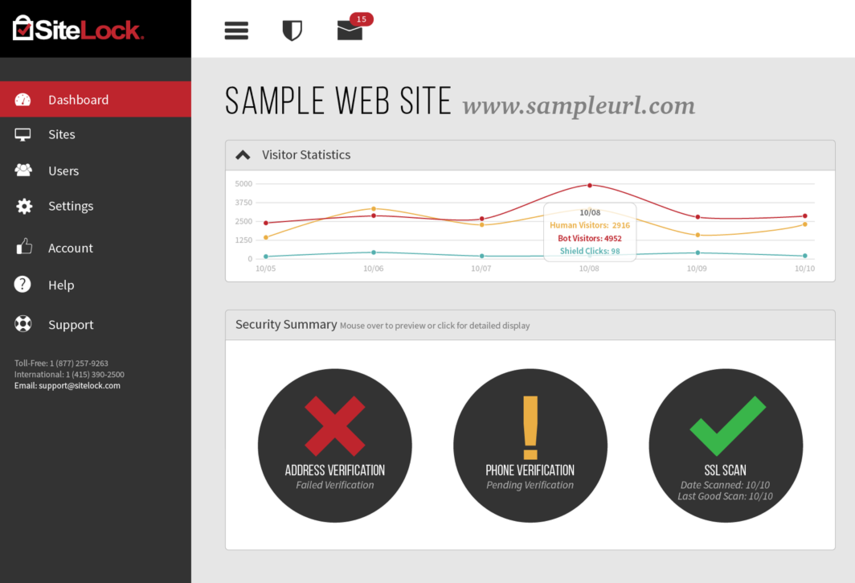What is SiteLock?
SiteLock is a cloud-based security service that scans websites for malware and vulnerabilities.
SiteLock features include:
Site Scanning
SiteLock gives website owners peace of mind by performing regular scans of websites to proactively detect malware, malicious code and vulnerabilities such as SQL Injection and XSS attack vectors.
Automatic Malware Removal
With the Fix and higher plans, when a website is infected, SiteLock's service will attempt to automatically remediate and remove the malware without any user involvement required.
Reputation Protection
SiteLock actively monitors blacklists for websites it monitors to identify when sites are blacklisted by spam services or search engines.
SiteLock Trust Seal
All SiteLock plans offer the SiteLock Trust seal designed to reassure visitors that the website is safe from threats.
Web Application Firewall
Get proactive protection against intrusions and attacks before they happen with the SiteLock WAF, available in the Defend plan.
Global CDN
SiteLock's global CDN service can improve site performance by distributing assets globally and serving them up to visitors from the closest locations automatically.
What is Sitelock Risk Score Assessment?
The Website Risk Assessment is SiteLock’s predictive model for site compromise. It leverages a massive data set, collected from scanning over 6 million active website customers, to proactively predict the risk of a website compromise. Unlike traditional tools such as vulnerability scanning, the risk model is designed to identify high-risk websites with high degrees of accuracy, before vulnerabilities in website software are even disclosed. With this approach, sites identified as high-risk are 12 times more likely to be compromised than average websites.
Key factors used to predict the likelihood of attack:
Complexity: An overview of the complexity of the website, including page count, email address, iframes and forms, and the number of software packages included in the site.
Composition: An overview of the structure of the website, including a review of the software used to build the website (ie WordPress, Joomla etc).
Popularity: An overview of the site’s popularity in terms of visitors and social media. This section factors in social media followers, likes, overall social media presence etc.
These factors are reviewed, and the customer dashboard will display an overall Risk Score of high, medium, or low. It will also display the percentage that each factor contributed to the overall score.
System notifications are sent to or may have been received to instruct users they may want to take action or upgrade their service.

What Does the Risk Score Mean?
Given that it is challenging for a customer to lower their risk, and individual factors that they may not want to decrease such as popularity. Protect against the risk by upgrading SiteLock services.
Medium Risk - A medium risk score means a site is 6X more likely to be compromised than the average website. FIX for ongoing defence and automated removal of any malware issues. DEFEND is also a strong upsell to your medium risk e-commerce customers or for those with sites that have very high popularity
High Risk - High-risk score means that a site is more than 6X likely to be compromised or already potentially compromised. DEFEND is highly recommended in this case.
Infected Websites - When an infection is detected on a website, it is essential to remove it as quickly as possible. This is typically done by examining the website code and removing the malicious file or restoring the site of an earlier backup. In addition to helping your clients protect their websites. Sitelock Emergency can also help those that are already infected.
System notifications are sent to or may have already been received to instruct users they may want to take action or upgrade their service.





